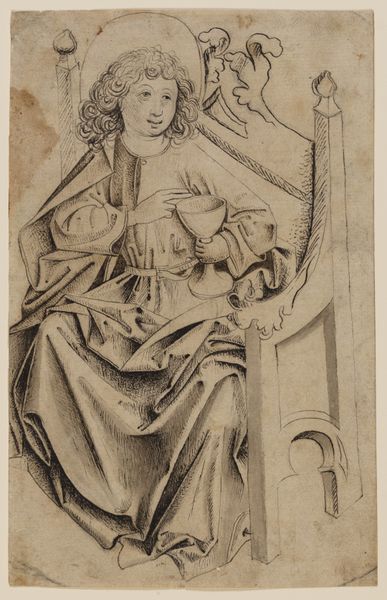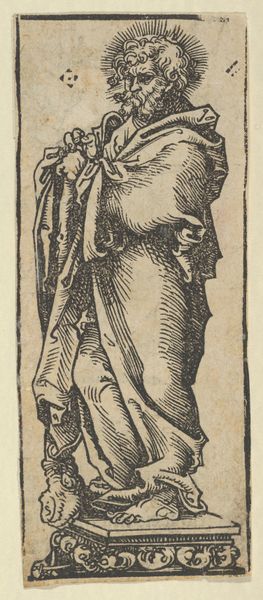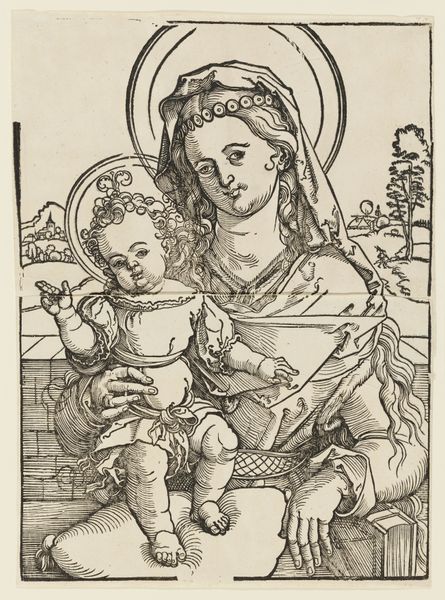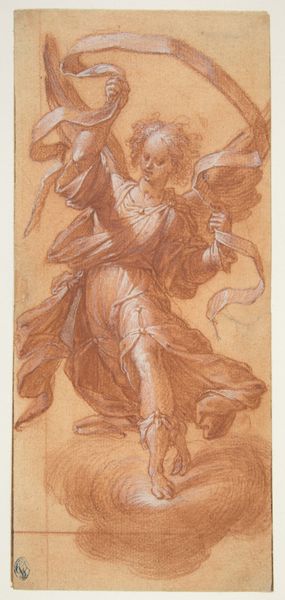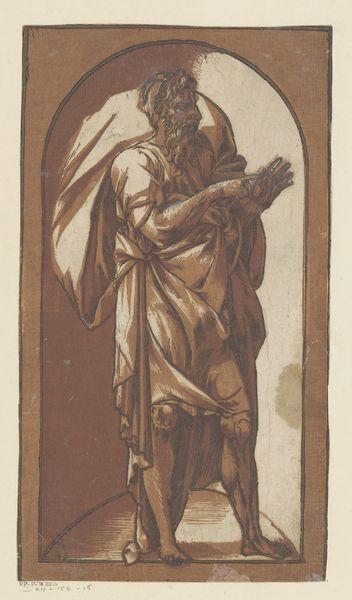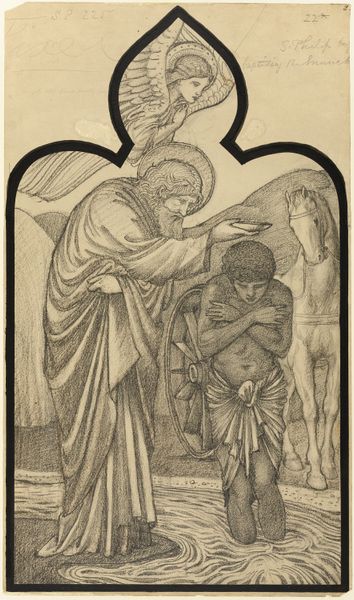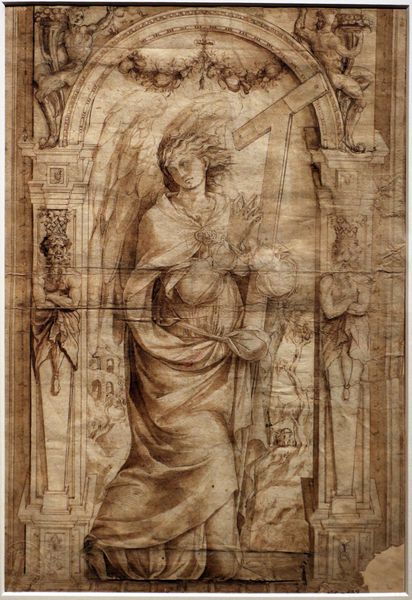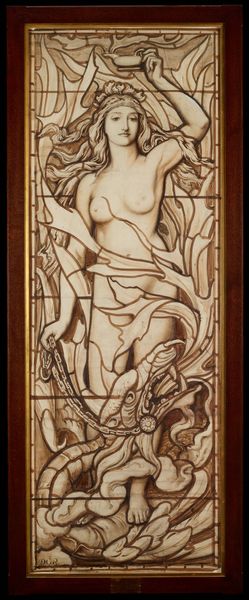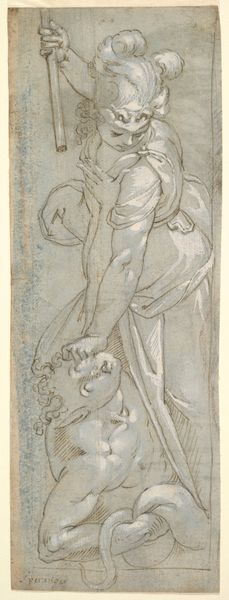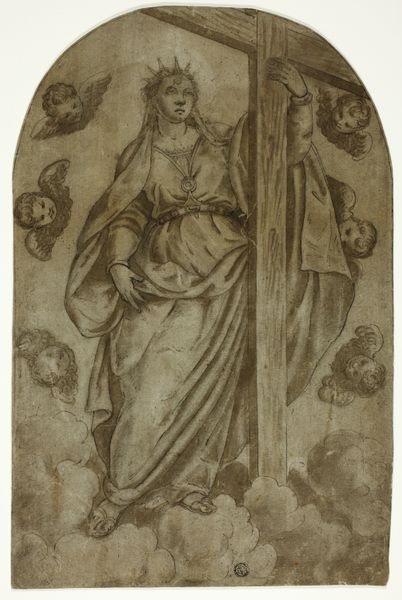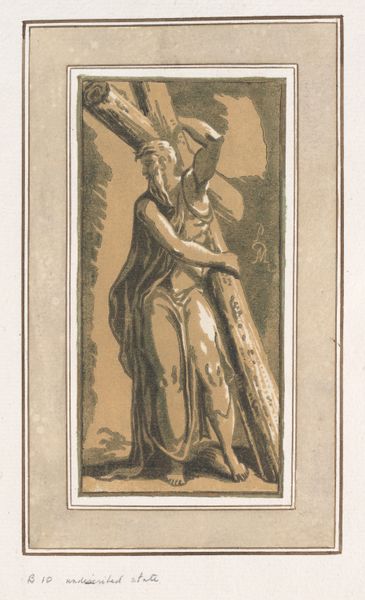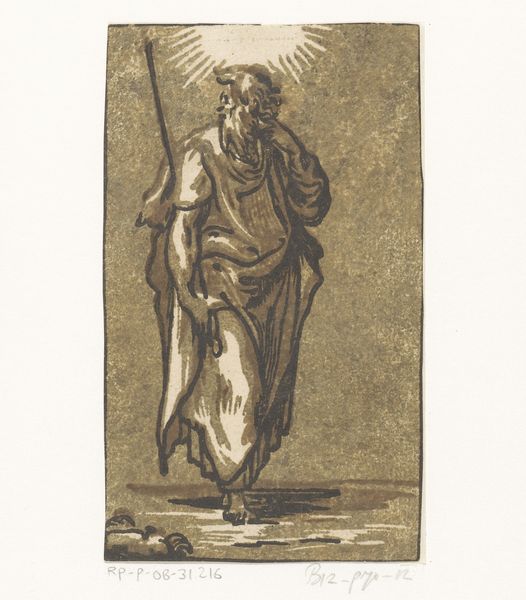
Copyright: Public domain
Edward Burne-Jones made this drawing, Daniel, in England, sometime in the 19th century. It depicts a kneeling angel with hands clasped in prayer, and a halo around his head. We can understand this image in the context of the 19th-century revival of religious art, and the growth of institutions such as museums and art schools. Burne-Jones was deeply inspired by medieval art, particularly stained glass, and he was part of the Pre-Raphaelite Brotherhood. This group of artists rejected the dominant academic style of art, which was taught in art schools, and looked back to the art of the Middle Ages for inspiration. Burne-Jones worked closely with the designer William Morris, and they were both interested in creating art that was accessible to a wider audience and this drawing may have been a design for stained glass or a tapestry. To understand this image better, we can look at the history of religious art in the 19th century, the writings of the Pre-Raphaelites, and the designs of William Morris. By understanding the social and institutional context, we can appreciate the meaning of this artwork, not as a purely aesthetic object, but as a product of its time.
Comments
No comments
Be the first to comment and join the conversation on the ultimate creative platform.
